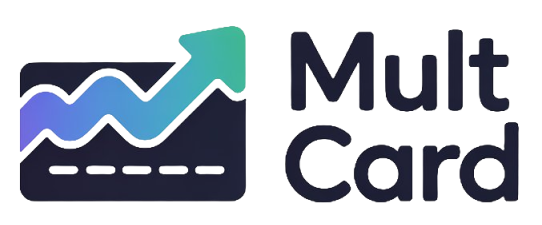Navigating the world of personal finance can often feel like trying to read a map in a foreign language. One of the most common yet frequently misunderstood terms you’ll encounter is the interest rate, especially when you’re considering a personal loan. It’s the number that ultimately determines how much you’ll pay back on top of the money you borrow, making it a critical factor in your financial decision-making.
Thinking of an interest rate as simply “the cost of borrowing” is a good start, but it’s only the tip of the iceberg. Understanding the different types of rates, the factors that influence the number you’re offered, and how it compares to the APR is essential. This knowledge empowers you to compare offers effectively, save significant money over the life of your loan, and borrow with confidence.
What Exactly is a Personal Loan Interest Rate?
At its core, an interest rate is the percentage of the principal (the amount you borrow) that a lender charges you for the privilege of using their money. This cost is typically expressed as an annual rate. If you borrow $10,000 at a 5% annual interest rate, you’re essentially agreeing to pay the lender 5% of that amount each year for the use of their funds, though the calculation is a bit more complex as your principal balance decreases with each payment.
The Crucial Difference: Annual Percentage Rate (APR) vs. Interest Rate
While often used interchangeably, the interest rate and the Annual Percentage Rate (APR) are not the same. The interest rate is purely the cost of borrowing the money. The APR, however, provides a more complete picture of the loan’s total cost.
APR includes the interest rate PLUS any additional fees associated with the loan, such as origination fees, closing costs, or other lender charges. Because it incorporates these extra costs, the APR is almost always higher than the simple interest rate and is a more accurate tool for comparing loan offers from different lenders. When you’re shopping for a loan, always compare the APRs to get a true “apples-to-apples” comparison.
How Lenders Determine Your Personal Loan Interest Rate
Why does one person get offered a personal loan with a 7% interest rate while another is quoted 18%? Lenders don’t pick these numbers out of thin air. They use a sophisticated risk assessment process to determine the likelihood that you’ll pay back the loan on time. The lower the perceived risk, the lower the interest rate you’ll be offered. Here are the primary factors they consider.
Your Credit Score: The Biggest Player
Your credit score is a numerical representation of your creditworthiness and is arguably the most significant factor influencing your interest rate. A high credit score (typically 740 and above) demonstrates a history of responsible borrowing and timely payments, signaling to lenders that you are a low-risk borrower. In contrast, a low credit score suggests a higher risk, and lenders will charge a higher interest rate to compensate for that potential risk.
Debt-to-Income (DTI) Ratio
Your DTI ratio compares your total monthly debt payments to your gross monthly income. A low DTI (generally below 36%) indicates that you have a healthy balance between your income and your financial obligations, leaving plenty of room to handle a new loan payment. Lenders see a low DTI as a positive sign that you won’t be overextended by new debt.
Loan Term and Amount
The length of your loan (the term) also plays a role. Longer loan terms, such as 60 or 72 months, often come with higher interest rates than shorter terms (e.g., 24 or 36 months). This is because there’s more time for your financial situation to change and a greater risk of default over a longer period. Similarly, very large loan amounts might carry different rates than smaller ones.
Type of Lender
Interest rates can vary significantly between different types of lenders. Traditional banks, credit unions, and online lenders all have different overhead costs and risk models. Credit unions, for example, are non-profits and often offer their members lower interest rates than for-profit banks. Online lenders may have lower operating costs, allowing them to offer competitive rates.
Fixed vs. Variable Interest Rates: A Crucial Choice
When you take out a personal loan, you’ll typically have to choose between a fixed or a variable interest rate. This decision has a major impact on your monthly payments and the total cost of your loan, so it’s vital to understand the difference.
- Fixed-Rate Loans: The interest rate is locked in for the entire life of the loan. Your monthly payment will be the same every single month, making it easy to budget. This predictability is the primary advantage of a fixed-rate loan.
- Variable-Rate Loans: The interest rate can fluctuate over the loan term. It is tied to a benchmark index rate, like the Prime Rate. If the benchmark rate goes up, your interest rate and monthly payment will also increase. While these loans might start with a lower introductory rate, they carry the risk of becoming more expensive over time.
Here’s a direct comparison to help you decide:
| Feature | Fixed-Rate Loan | Variable-Rate Loan |
|---|---|---|
| Monthly Payment | Stays the same | Can change (increase or decrease) |
| Predictability | High – Easy to budget | Low – Payments can be unpredictable |
| Initial Rate | Typically higher than variable introductory rates | Often starts lower to attract borrowers |
| Risk Level | Low for the borrower | High for the borrower (risk of rising rates) |
What is a Good Interest Rate on a Personal Loan?
The definition of a “good” interest rate is relative and depends heavily on your individual credit profile and the current economic climate. However, we can look at average rates based on credit score tiers to give you a general idea.
| Credit Score Range (FICO) | Credit Tier | Typical APR Range (Illustrative) |
|---|---|---|
| 740 – 850 | Excellent | 7% – 12% |
| 670 – 739 | Good | 12% – 18% |
| 580 – 669 | Fair | 18% – 25% |
| Below 580 | Poor | 25% – 36%+ |
Note: These are general estimates and actual rates may vary widely based on the lender and other factors.
Practical Steps to Secure a Lower Interest Rate
You are not just a passive recipient of interest rates; you can take proactive steps to improve the offers you receive. If you want to secure the best possible personal loan interest rates, focus on making yourself a more attractive candidate to lenders.
- Improve Your Credit Score: This is the most impactful step. Pay all your bills on time, pay down existing credit card balances to lower your credit utilization, and review your credit report for errors. You can learn more about how your credit score is calculated to better understand where to focus your efforts.
- Lower Your Debt-to-Income Ratio: Before applying for a loan, try to pay down existing debts (like credit cards or other loans) or find ways to increase your income.
- Shop Around and Compare Lenders: Don’t accept the first offer you receive. Get quotes from multiple sources, including your local bank, credit unions, and reputable online lenders. Comparing APRs is the key here.
- Consider a Shorter Loan Term: If you can afford a higher monthly payment, opting for a shorter loan term will often result in a lower interest rate and less total interest paid.
- Check for Pre-qualification Offers: Many lenders allow you to pre-qualify for a loan, which shows you the potential rates and terms you might receive with only a “soft” credit check that doesn’t affect your score.
Conclusion: Empowering Your Financial Decisions
The interest rate on a personal loan is far more than just a number; it’s a critical component that dictates the overall cost of your debt. By understanding how rates are determined, the difference between fixed and variable options, and what constitutes a good rate for your credit profile, you transform from a passive borrower into an informed consumer.
Taking the time to improve your credit, reduce your DTI, and diligently compare offers can save you hundreds or even thousands of dollars over the life of your loan. This knowledge empowers you to make smarter financial choices, ensuring that your personal loan serves as a helpful tool rather than a burdensome obligation. For more detailed guidance, you can always consult official resources that provide unbiased information on understanding interest rates on personal loans and other consumer credit topics.






